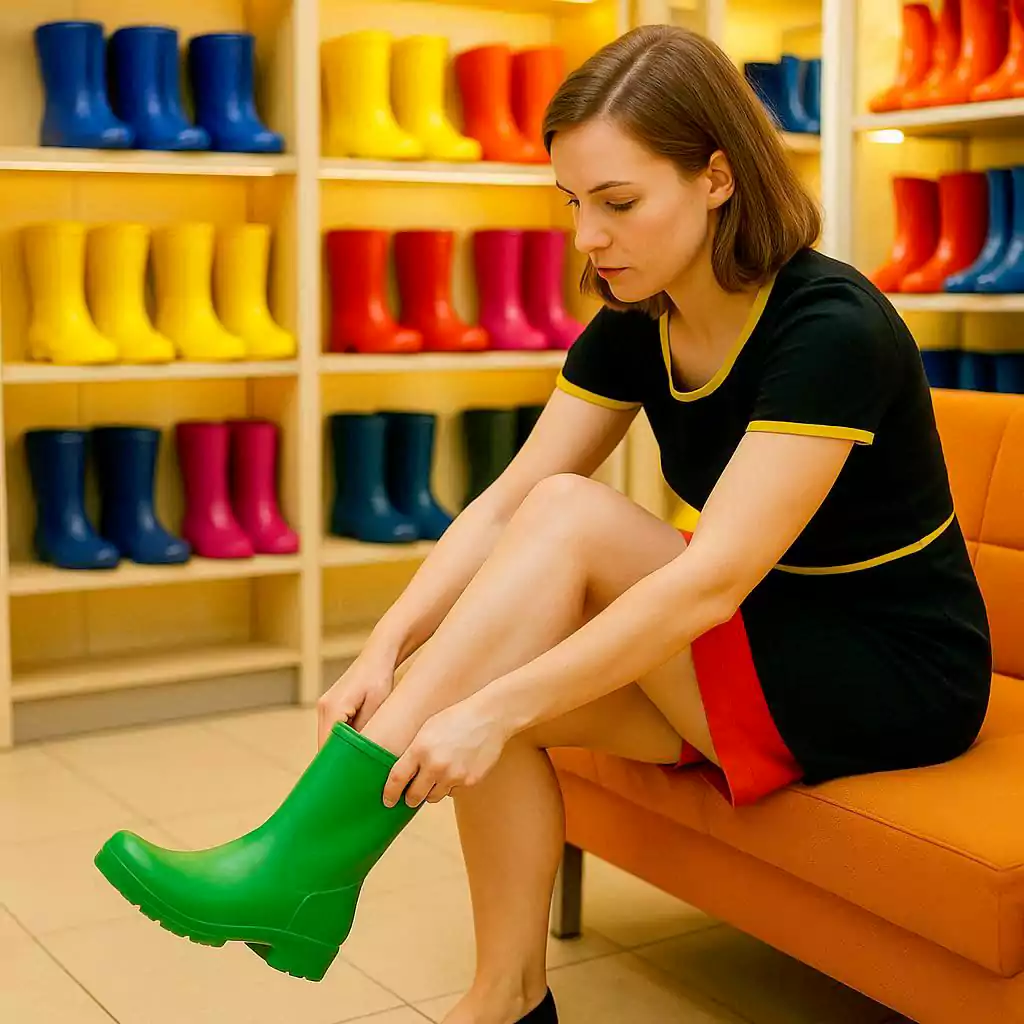Choosing the right size for rubber boots is essential for both comfort and functionality. Ill-fitting boots can cause discomfort, blisters, and even reduce the effectiveness of the boots in protecting against wet or muddy conditions. Whether you’re preparing for rainy days, gardening, or outdoor adventures, finding the perfect fit is key.
Understand That Rubber Boots Run Larger Than Regular Shoes
One of the first things to keep in mind is that rubber boots are often cut wider than regular shoes. This design allows for thicker socks and provides extra space for movement, but it also means you can’t rely solely on your usual shoe size. Wearing boots that are too tight can be uncomfortable and restrict blood flow, while boots that are too loose may cause slipping and instability.
Measure Your Foot for Accurate Sizing
The most reliable way to find the right rubber boot size is by measuring your foot. Use a ruler or measuring tape to determine your foot length from heel to toe. Once you have the measurement, consult the manufacturer’s size chart to select the closest match.
If you plan to wear thick or thermal socks, it’s generally a good idea to choose a half or full size larger than your normal size. This extra space ensures comfort without compromising stability.
Consider Insoles and Material Flexibility
Some brands offer insulated or warming insoles, which can add extra thickness inside the boot. When using such insoles, make sure to account for their added volume when selecting your size.
The material of the boots also affects fit. Boots made from pure rubber tend to be less flexible, while models with neoprene or mixed materials can stretch slightly to accommodate the foot more comfortably. Understanding the material properties can help you make a more informed sizing choice.

Try Before You Buy
Whenever possible, try on rubber boots before purchasing. Walk around for a few steps to ensure your heel doesn’t slip and your toes have enough room to move. A well-fitting pair of rubber boots should feel snug but not tight, providing both support and comfort regardless of the weather conditions.
Key Takeaways
- Rubber boots often run larger than standard shoes.
- Measure your foot and compare it to the manufacturer’s size chart.
- Allow extra space for thick socks or insoles.
- Consider the material, as it affects flexibility and fit.
- Always try on boots and test for heel stability and toe space.
Finding the right size ensures that your rubber boots will protect your feet from water, mud, and cold while keeping you comfortable throughout the day. With the right fit, you can enjoy every outdoor activity without worrying about sore feet or slipping boots.

